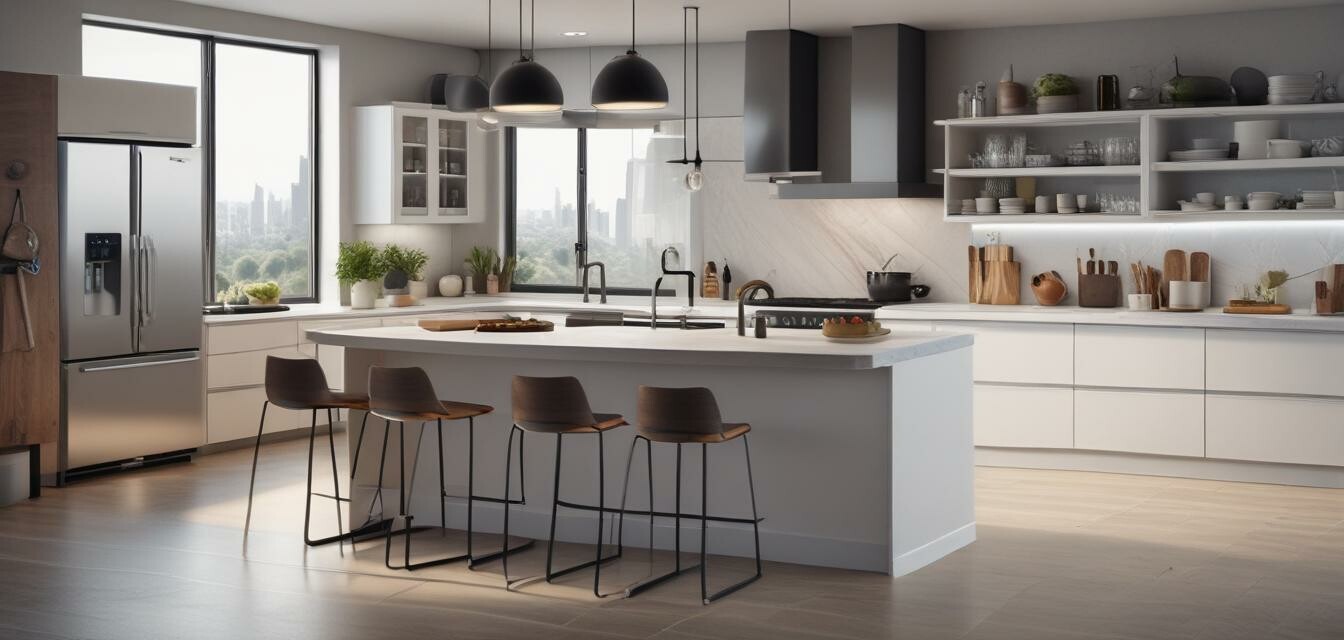
Creating a Smart Kitchen on a Budget
Key Takeaways
- Smart kitchen appliances can elevate your cooking experience without costing a fortune.
- Prioritize essential gadgets that offer multifunctional capabilities.
- Consider energy-efficient models to save money in the long run.
- Look for sales, discounts, and refurbished appliances to stay within your budget.
- Integrate smart technology that enhances convenience and efficiency.
Creating a smart kitchen doesn't have to mean emptying your wallet. With the advancement of technology, there are plenty of affordable options to turn your cooking space into a modern marvel. In this guide, we'll discuss practical tips for integrating smart appliances into your kitchen while keeping expenses low.
Understanding Smart Appliances
Smart appliances connect to your home network, allowing you to control them remotely via smartphones or assistants like Alexa or Google Assistant. They can make daily tasks more manageable, save on energy costs, and even provide real-time cooking assistance. Here’s a list of popular smart appliances:
- Smart Ovens
- Smart Refrigerators
- Touchless Faucets
- Bluetooth-Enabled Devices
- Energy-Efficient Appliances
Budget-Friendly Smart Kitchen Tips
1. Assess Your Needs
Before making any purchases, take a look at your current kitchen setup. Consider what appliances you use the most and which tasks take up extra time or energy. This way, you can focus on essential upgrades, ensuring every penny spent is worth it.
2. Prioritize Essential Gadgets
Not all smart devices offer significant benefits. Focus on purchasing products that add real value. For example, investing in a smart oven can enhance your cooking experience significantly as they often provide features like guided cooking and temperature control.
3. Shop Online and Look for Discounts
One of the best ways to save money is by shopping online for deals on smart appliances. Websites that specialize in kitchen gadgets often have discounts or deals that can significantly reduce costs. Regularly check our Bluetooth-enabled devices or energy-efficient appliances.
4. Consider Refurbished Appliances
Refurbished products can be a great way to save money without sacrificing quality. Look for reliable brands that offer warranties on refurbished items. You can find induction cooktops or other smart appliances refurbished at lower prices.
5. Energy Efficiency Counts
When selecting appliances, look for energy-efficient models. While these may have a higher upfront cost, they will save you money on your electricity bill over time. Choose items with great energy ratings, such as smart refrigerators that help manage food storage efficiently.
Smart Integration Tips
Integrating smart devices into your kitchen is easier than you think. Here are some practical ways to do so:
- Home Assistant: Utilize voice-activated assistants to command your appliances.
- Smart Lighting: Install smart bulbs that can be controlled through your smartphone.
- Recipe Assistance: Use smart displays to bring recipes to life while cooking.
Sample Budget Layout for Your Smart Kitchen
| Appliance | Estimated Cost | Notes |
|---|---|---|
| Smart Oven | $500 - $800 | Choose a model with a guided cooking feature. |
| Smart Refrigerator | $600 - $1200 | Look for energy-efficient options. |
| Touchless Faucet | $150 - $300 | Convenience and hygiene benefits. |
| Bluetooth Kitchen Scale | $30 - $60 | Perfect for precise cooking. |
| Induction Cooktop | $300 - $600 | Fast heating and easy to clean. |
Final Thoughts
Building your dream smart kitchen on a budget is achievable with careful planning and informed purchases. By prioritizing essential appliances, looking for discounts, and focusing on energy efficiency, you can enjoy the benefits of modern cooking without overspending. To learn more about maintaining your smart kitchen, don’t forget to check out our Smart Kitchen Tips blog category.
Pros
- Increased efficiency in cooking and meal preparation.
- Convenient features that enhance usability.
- Long-term savings on energy costs.
- Smart integrations can simplify hosting and cooking routines.
Cons
- Initial purchase costs may be higher than traditional appliances.
- Some smart devices require a reliable internet connection.
- Learning curves associated with new technologies.
- Potential privacy concerns with internet-connected devices.